AI diffusion
Microsoft recently published an interesting paper on “AI diffusion” which made me appreciate the true diffusion of AI may be higher than most people think and bottlenecks for further adoption may currently be underestimated.
This paper titled, “Measuring AI Diffusion: A Population-Normalized Metric for Tracking Global AI Usage,” introduces the “AI User Share,” a novel metric designed to estimate the percentage of a country’s working-age population (15-64) actively using AI tools. The methodology leverages anonymized Microsoft telemetry data.
They define “AI User Share” as: percentage of Microsoft users who used AI tools (e.g. ChatGPT, Gemini, Microsoft Copilot etc.) multiplied by percentage of population with a desktop device multiplied by country‑specific mobile scaling, and then normalize to the working‑age population (15–64). It’s a rare population‑normalized usage signal across 148 economies, updated in near–real time.
The authors acknowledge that the metric’s primary limitation is its reliance solely on Microsoft telemetry. This introduces inherent biases toward desktop platforms and the Microsoft user demographic. Although adjustments are made to account for mobile usage and overall device penetration (using third-party data like StatCounter), the metric assumes that Microsoft user behavior is representative of the general population, which may not always be accurate.
Perhaps the most crucial insight is that the primary barrier to AI adoption in developing economies is internet access, rather than a lack of interest.
While overall AI User Share is low in these regions, the adoption rate among the population that already has internet access is robust. The analysis examined the 15 economies with the lowest internet penetration and found: their average overall AI User Share is only 9%. However, among their connected populations, the AI User Share jumps to 23%. This 23% adoption rate among connected users is actually higher than the 20% average for connected populations in the rest of the countries analyzed.
For example, Zambia has an overall AI User Share of 12%, but this rises to 34% among its connected population. Similarly, Pakistan jumps from 10% overall to 33% connected. Many of these countries are lagging developed economies considerably because of their lack of access to internet itself.
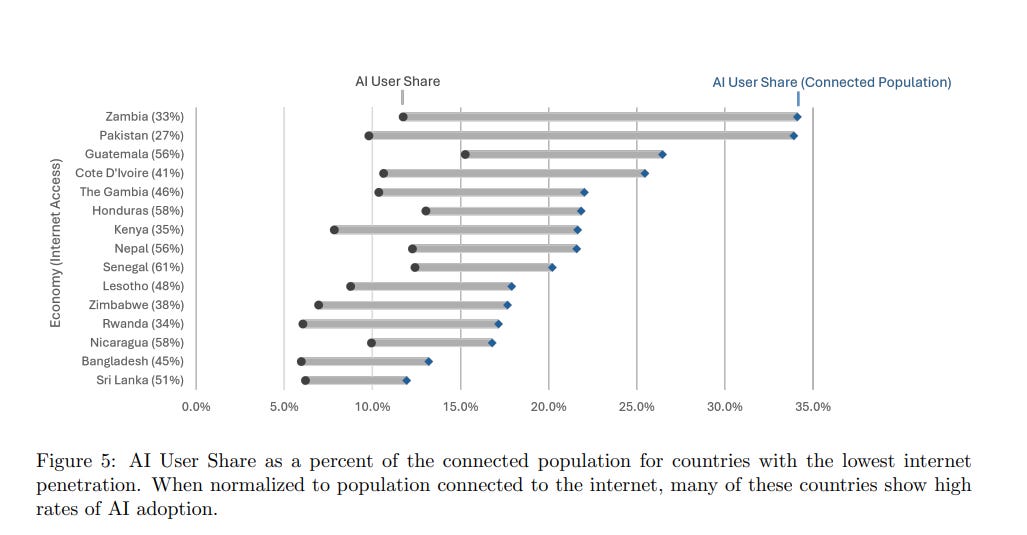
The paper also contextualizes AI adoption within a “technology funnel” correlated with GDP per capita: from Electricity to Internet Connectivity to Digital Skills to AI Usage. From the paper:
“These four can be considered a funnel, since it is difficult to use AI without having basic digital skills. Likewise, basic digital skills are unlikely to be present without internet connectivity, and even moreso, electricity.”
The analysis shows significant drop-offs at each stage of the funnel. While electricity and connectivity approach saturation in high-GDP countries, the levels of digital skills and, particularly, AI usage lag significantly behind.
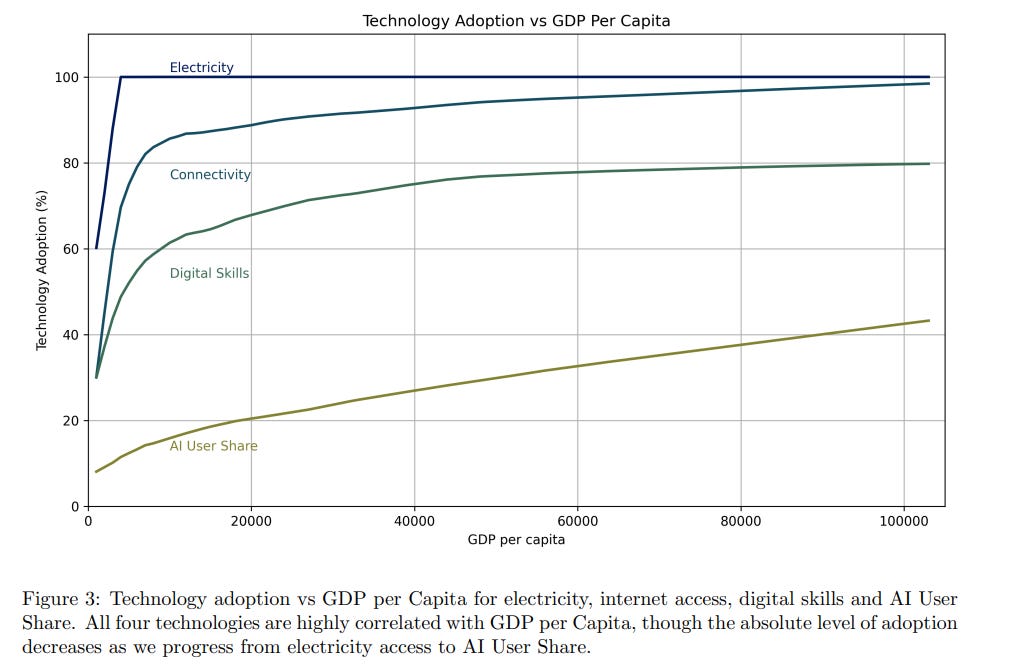
While wealthier nations generally lead adoption, the data suggests a potential ceiling under current conditions. Apart from outliers like the UAE and Singapore, most advanced economies cluster within a 25%–40% adoption range.
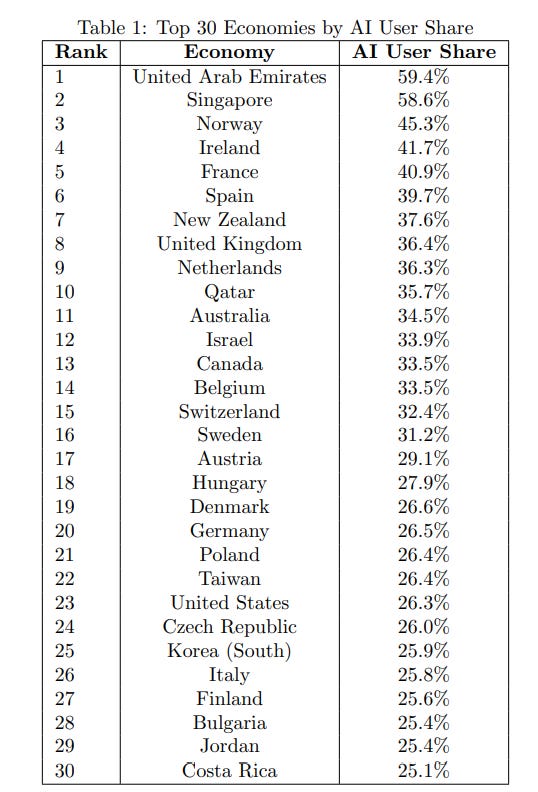
Some high-income countries, including the United States (26.3%) and Denmark (26.6%), fall below the trend line, indicating they are underperforming relative to peers with similar GDP levels.
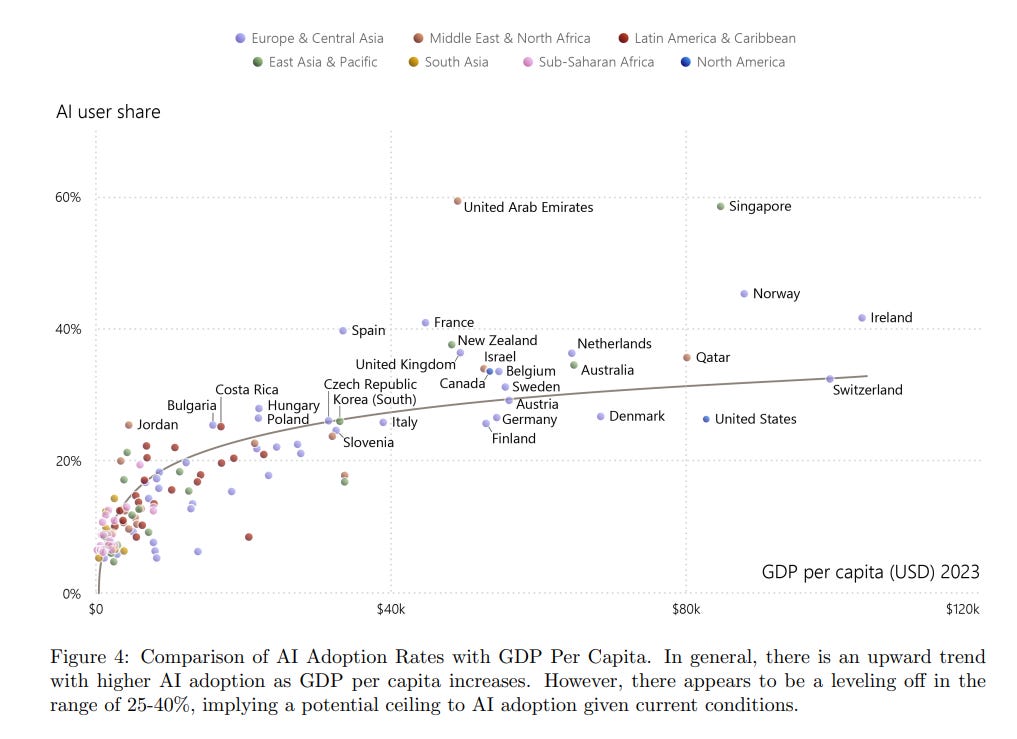
The AI User Share metric is sensitive enough to capture almost real-time market dynamics following major product launches. The introduction of DeepSeek in January 2025 illustrates this clearly.
Following DeepSeek’s launch, AI adoption in China accelerated dramatically. China’s AI User Share more than doubled from 8% to 20% in the subsequent months. In contrast, the US AI User Share remained steady at around 25%. This surge propelled China to become the world’s largest AI market by volume, with an estimated user base exceeding 195 million.
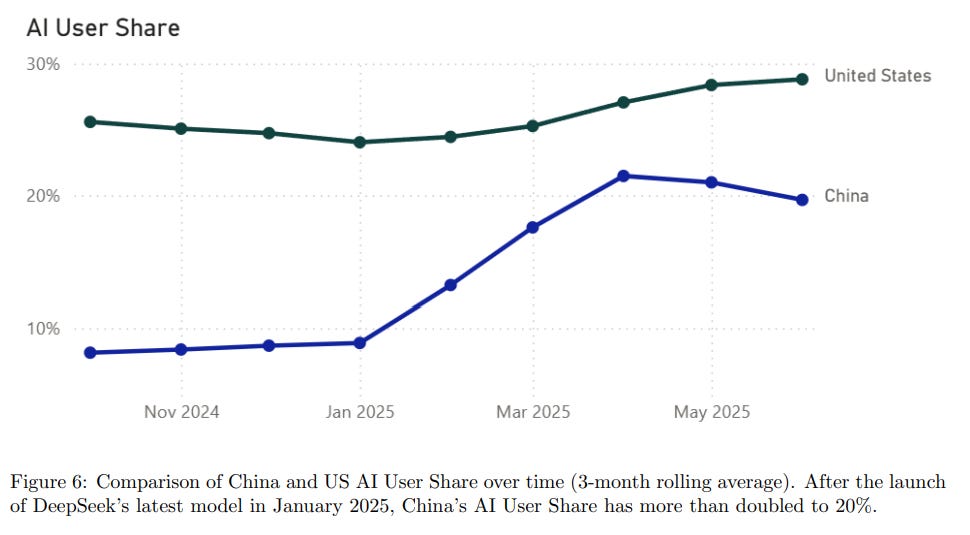
Overall, the big takeaway from the paper is while global AI adoption is currently concentrated in wealthy nations and strongly correlated with GDP, usage rates among connected populations in developing countries are pretty similar across the world which implies that the primary barrier to worldwide AI diffusion is access to internet itself.
In addition to “Daily Dose” (yes, DAILY) like this, MBI Deep Dives publishes one Deep Dive on a publicly listed company every month. You can find all the 63 Deep Dives here.
Current Portfolio:
Please note that these are NOT my recommendation to buy/sell these securities, but just disclosure from my end so that you can assess potential biases that I may have because of my own personal portfolio holdings. Always consider my write-up my personal investing journal and never forget my objectives, risk tolerance, and constraints may have no resemblance to yours.
My current portfolio is disclosed below: